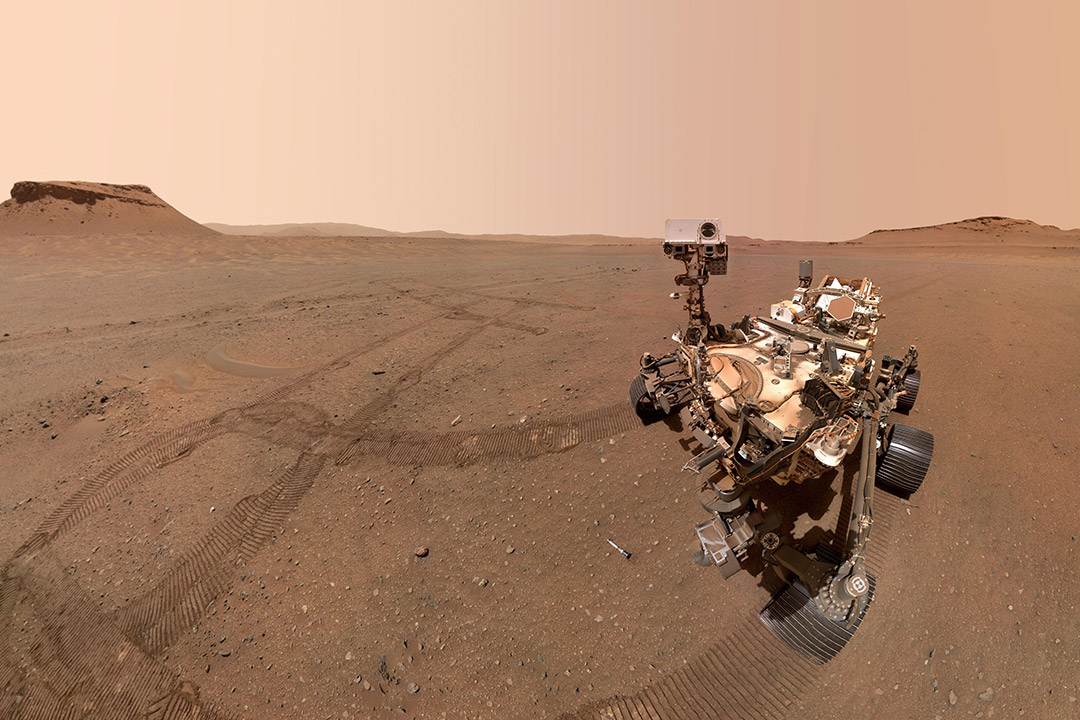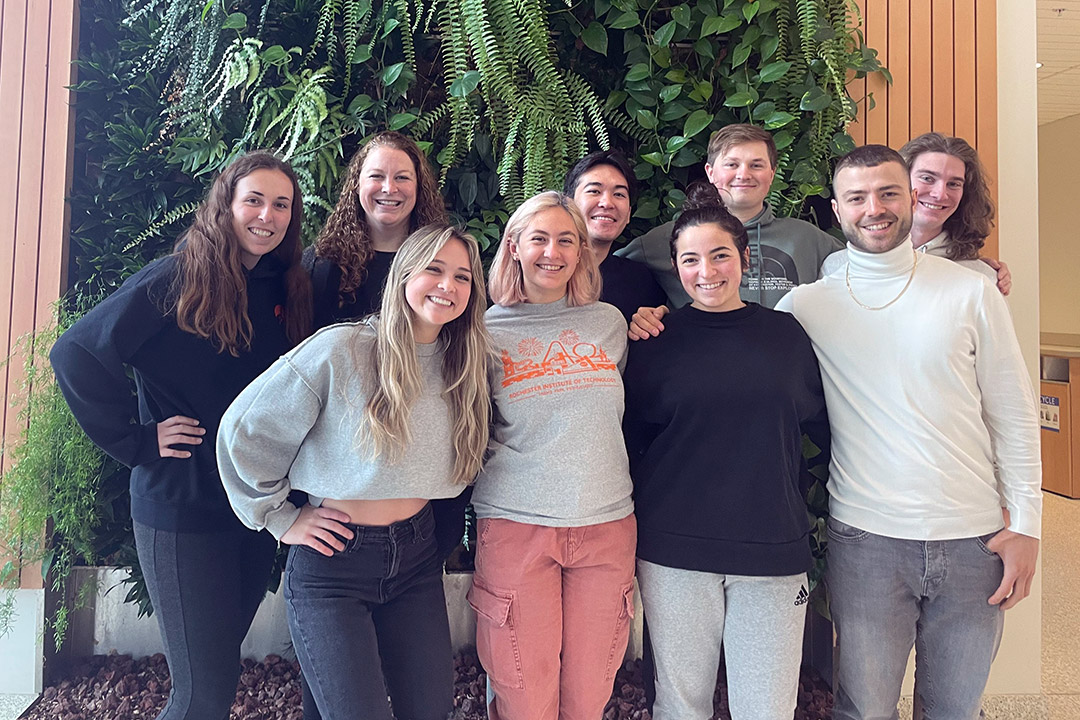RIT students building device to keep astronauts healthy in space
Project widens the orbit of a collaborative team that includes engineering, game design, and exercise science students
NASA/JPL – CalTech/MSSS images
NASA’s Perseverance Mars Rover explores the planet on various scientific missions. RIT students are part of collegiate design challenge to build equipment that will support astronauts as they spend more time in space, and possibly on the Red Planet in the future.
Students, faculty, and alumni at Rochester Institute of Technology are participating in NASA’s national Moon to Mars initiative to build a training device and monitoring tool to help make extended space travel healthier for astronauts.
The project, led by mechanical engineering Associate Professor Kathleen Lamkin-Kennard, is being funded by NASA through its National Space Grant Foundation. Integrating game design, exercise science, and wearable technology, this is the second NASA design project that RIT students were selected to participate in that combines the strengths of the university’s technology, arts, and engineering programs.
Provided photo
Students building an astronaut training device are (front, left to right) Chris Baron, Sarah Manes, Maiah Fallone and Angelo Besho. (Back row, left to right) Alex Speyer, Jennifer Indovina (project guide), Isken Mambetkadyrov, Matt Buck and Spencer Davis.
The goal is to focus more on the Mission to Mars where astronauts are expected to be in space for longer time periods. Student teams are being asked to design technology devices or systems that will assess physiological signals from the astronaut at rest and when they are engaged in physical activity.
Each year, NASA coordinates a collegiate design challenge. Its engineering project managers partner with student teams selected from across the country, providing project guidance throughout the development process.
“They need to have some type of demonstration of the technology,” said Lamkin-Kennard, a faculty-researcher in RIT’s Kate Gleason College of Engineering. “There are different types of requirements during the NASA projects because you are dealing with things in space, in zero gravity, altered gravity and how do you deal with this? The students get to look at real-world things for real-world customers, so it puts a little more pressure on them. When you know you have a meeting with NASA, I think it can get a little intense for them.”
Sarah Manes, project lead for the student team, agreed. “NASA put forward this challenge to help combat muscle degradation in space while keeping the exercise fun and engaging for astronauts. Making this device autonomous and with a virtual reality element is what will make us stand out from other devices currently being used. Building a product to be used in space brings a whole new set of challenges and requirements that we’ve never encountered before. This pushes us to think of innovative ways to complete tasks that are straightforward on Earth. It’s quite exciting that we get to be the pioneers in this unexplored sector of space physiology.”
According to NASA, muscle mass and bone density changes take place due to limited or no gravity.
“I was inspired while walking through Imagine RIT last year to try to propose a senior design project that combines my interests in space and biomedical devices. I stumbled upon last year’s XHAB team, and I knew that the NASA Challenge would be the perfect avenue to do this,” said Manes, a fifth-year mechanical engineering student from Mentor, Ohio.
She enjoys rock climbing and saw the NASA challenge as an opportunity to devise similar activities for the project. She worked with Lamkin-Kennard and mechanical engineering classmate Alex Speyer to propose an American Ninja Warrior-type of training device that was accepted by the agency and incorporated into RIT’s senior design program this fall.
Multidisciplinary Senior Design (MSD) projects are two-semester engineering courses where students develop project plans and build working prototypes for clients. Students work with professional advisers, called guides, who are often faculty members and alumni. This year, as in previous NASA project work, alumna Jennifer Indovina ’06 (electrical engineering), ’07 (MBA) has assisted with project development. Also involved are Beth DeBartolo, MSD director; David Schwartz, director of the School of Interactive Games and Media in RIT’s Golisano College of Computing and Information Sciences; and Bryce Beamer, research faculty in RIT’s College of Art and Design, and an expert in wearable technologies.
NASA’s objectives are to show how its major agency projects are developed, the role multidisciplinary teams play in the overall process, and how collegiate teams can contribute ideas and prototypes for future space missions.
The process aligns well with the engineering senior design program, said Lamkin-Kennard.
“What has been nice about both projects that we’ve had is they are part of this xHAB program, and the goal is really to engage students in design projects that follow NASA design processes. They want to bring students into that fold, and fortunately for us, it works really well with our senior design structure because they are very similar.”
RIT’s relationship with the Moon to Mars program began in 2021 when Lamkin-Kennard received the original NASA grant for the overall project. It also won honors in 2022 at the Imagine RIT: Creativity and Innovation Festival. In March 2023, the team was invited to Johnson Space Center in Houston to demonstrate the balance system to NASA engineers. The team received a New York State Space Grant Award in October to continue work on this project.
Undergraduate student team members are: Billy Guzik, game design; Alex Speyer, mechanical engineering; Spencer Davis and Iskender Mambetkadyrov, both biomedical engineering; Angelo Besho, computer engineering; Matthew Buck, electrical engineering; Chris Baron, industrial design, and Maiah Fallone, industrial and systems engineering.








